"Building Your Own Greenhouse" by Max Clarke
Page 64 of 123
accordance to the weather conditions in your area. Strict
adherence to these codes helps to prevent freezing or cracking
of the foundation of your greenhouse.
Mark chalk lines across the ground area for your greenhouse
and dig trenches according to your local building codes along
the marked chalk lines. Set level concrete footings eight
inches wide into the trench. Your steel rod footings should be
tied horizontally or vertically inside foundation forms before
the pouring of concrete.
Flooring of Your Greenhouse
Ensure the ground area across your flooring to be as level as
possible. Dump in gravel and smooth it.
Next, pour in crushed stone and tar paper. You could use
builder's heavy plastic too. Then, set the mesh and pour in the
concrete.
In hot weather, cover concrete with plastic and sprinkle water
intermittently to help the flooring become strong and sturdy.
Copyright © 2007 eBookwholesaler All Rights Reserved 64 -
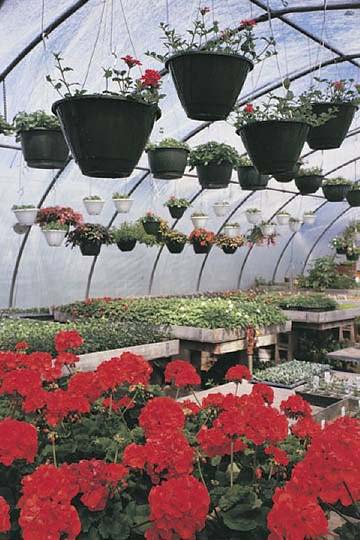
"Building Your Own Greenhouse" by Max Clarke
Page 65 of 123
Leave two-inch drainage holes four feet apart in the
foundation. After the footings settle well into the foundation,
remove your forms and fill the foundation with gravel or dirt.
Installing gravel or tile drainage channels with drainage holes
can allow easy drainage within your greenhouse.
Copyright © 2007 eBookwholesaler All Rights Reserved 65 -
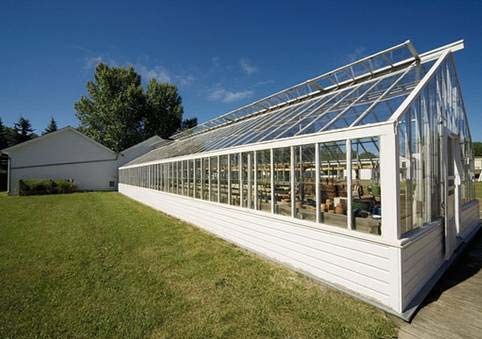
"Building Your Own Greenhouse" by Max Clarke
Page 66 of 123
Selecting the Right Lights
Greenhouse cultivation does not depend on natural weather
conditions. It all depends on the artificial environment you
create within your greenhouse. Therefore, your artificial
arrangements should be in accordance with the natural
requirements of plants for healthy growth.
Light Requirements
Sunlight forms the essence for the growth of any plant. All
greenhouses allow easy penetration of sunlight. However,
available sunlight may not be sufficient during the winter
months and on cloudy days. Therefore, you need to arrange
artificial lights.
Copyright © 2007 eBookwholesaler All Rights Reserved 66 -
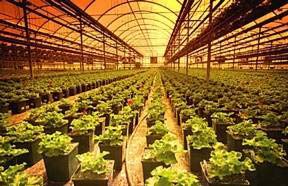
"Building Your Own Greenhouse" by Max Clarke
Page 67 of 123
Selection of artificial lights depends on:
Your plants’ requirements
The area of your greenhouse
Availability and intensity of sunlight
Many different types of lights are available; fluorescent lamps,
incandescent lamps, mercury vapor lamps, neon lamps,
sodium vapor lamps and others.
Different color combinations of lights exist. Color choices
depend on the requirements of your plants.
Lights could increase the temperature within your greenhouse
if they are in addition to reasonable sunlight. Choosing lights
that emit more light and less heat energy can help to maintain
greenhouse temperatures at appropriate levels.
Types of Lights
Fluorescent lamps: These lamps are most popular for use in
greenhouses. These lamps are available in various colors. The
highest preference is for white fluorescent lamps. These lamps
Copyright © 2007 eBookwholesaler All Rights Reserved 67 -
"Building Your Own Greenhouse" by Max Clarke
Page 68 of 123
provide more light with less heat. High intensity fluorescent
tubes of 1500 ma can deliver a high wattage of around 2000-
foot candles.
Soft lights of this type contain the entire spectrum of sunlight.
Having such lights over seedlings with poor growth can boost
their growth. Restricting use of these lights over smaller areas
can be a good option.
Incandescent lamps: Incandescent lamps are available in
different wattages, ranging from sixty to five hundred watts.
These lights can make the plants think days are longer in your
greenhouse. You can vary foot-candle levels by adjusting the
spacing and mounting height of the lamps over your plants.
High-intensity discharge (HID) lamps: As the name
suggests, these lamps provide high emission of light. These
lights last for a long time; for over five thousand hours.
Efficiency of these lights increases with the addition of sodium
and metal-halides.
Metal Halide Grow Lights: These lights emit the blue and
violet colors of the spectrum. Such light is normally available
during spring. These lights best suit growing plants and
support their early developmental stages to promote stronger
roots, increased resistance to diseases and a more compact
green growth.
High-Pressure Sodium Lights: These lights produce orange and red colors of spectrum that encourages plant growth like
Copyright © 2007 eBookwholesaler All Rights Reserved 68 -
"Building Your Own Greenhouse" by Max Clarke
Page 69 of 123
you see in autumn and early fall. Therefore, this light suits
plants in a mature stage.
You can use a convertible grow light system to alternate
between metal halide lights and high-pressure sodium lights.
You can use metal halide lights for starting seedlings and then
shift to high-pressure sodium lights as they grow into mature
plants.
This can save you money compared to purchasing separate
lighting systems.
Copyright © 2007 eBookwholesaler All Rights Reserved 69 -
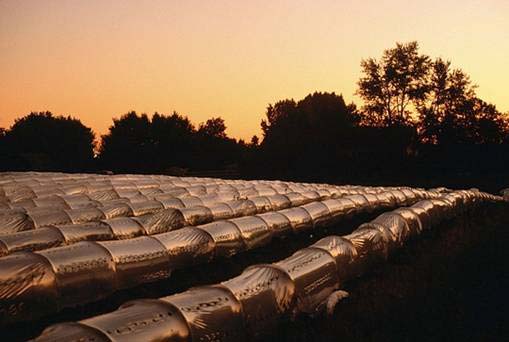
"Building Your Own Greenhouse" by Max Clarke
Page 70 of 123
Part-IV: Environmental Systems
Cooling, Ventilation and Your Greenhouse
Greenhouses essentially lock in sunlight to provide a more
suitable environment for plants to grow. But, trapped sunlight
should not exceed required levels. Otherwise, your plants may
wither. Use adequate cooling strategies within your
greenhouse to maintain optimum temperature and humidity
levels.
Cooling and Ventilation of Greenhouses by Plants
Plants have an inbuilt mechanism to cool themselves. They
regulate their temperatures by evaporating water through the
Copyright © 2007 eBookwholesaler All Rights Reserved 70 -
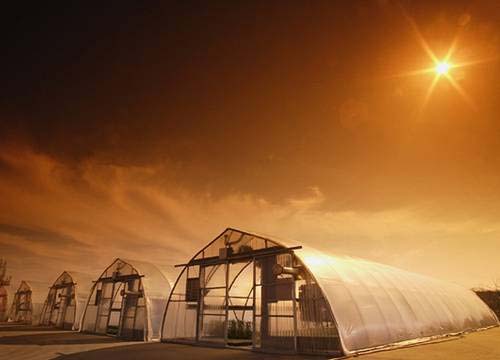
"Building Your Own Greenhouse" by Max Clarke
Page 71 of 123
process of transpiration. Plants can keep themselves cool in
greenhouses if there are many leaf surfaces.
If your greenhouse houses plants with many large leaves, the
atmosphere in the greenhouse can be cooled to a considerable
extent.
To help plants transpire easily and effectively, you should
supply them with lots of water. Irrigate your plants in the
greenhouses extensively and frequently. This neutralizes salt
levels in plant roots so that high salt levels do not interfere
with their intake of water.
Next, provide sufficient ventilation within the greenhouse so
that moist air transpired through leaf surfaces goes out and
cool dry air enters greenhouse. Employing proper air
Copyright © 2007 eBookwholesaler All Rights Reserved 71 -
"Building Your Own Greenhouse" by Max Clarke
Page 72 of 123
circulation techniques can help provide this environment for
your plants.
Cooling and Ventilation by Blocking Sunlight
You can maintain cool temperatures in the greenhouse by
blocking sunlight. Fix retractable or fixed sunshades to restrict
the amount of sunlight entering your greenhouse. Maintain an
adequate supply of sunlight for plants to photosynthesize their
food.
Light requirements of plants depend on the specific species
and the intensity of available light too. If your greenhouse has
many crops with dense foliage, use little restrictive shades so
that these plants and their foliage do not suffer from lack of
adequate sunlight.
Use semi-permanent shade materials like screens and
coatings. These are very flexible in adjusting light
requirements.
Ventilation Equipment
Roof vents help remove hot air from within the greenhouse
and replaces it with cool outside air. Hand-operated roof vents
require regular temperature checks. You have to open and
close vents according to the changes in outside weather. This
is necessary to prevent excessive cooling or heating of air
within the greenhouse.
Copyright © 2007 eBookwholesaler All Rights Reserved 72 -
"Building Your Own Greenhouse" by Max Clarke
Page 73 of 123
Install sidewall or gable exhaust fans underneath curtains to
remove trapped, heated air.
Curtains pulled in an east-west direction prove useful in
regulation of penetrating sunlight. Use curtains of open-weave
materials so that hot air rises through the roof.
Ventilation systems function in relation to the area of your
greenhouse. The height of your greenhouse does not play any
role in effective ventilation. An effective ventilation system
should be able to exhaust eight to ten cubic feet of air per
minute from every square foot of your greenhouse.
Further, ventilation should be uniform all over your
greenhouse. If outside temperatures are very high and dry,
use ventilation systems in combination with the natural
transpiration systems of your plants to maintain necessary
coolness within the greenhouse.
This requires frequent regulation of the air in the greenhouse.
Another way of cooling your greenhouses is through use of
mechanical cooling; refrigeration or air-conditioning. This
technique could prove very costly.
Other cooling techniques include mists, fogs, pads and fan
systems and sprinklers. All these work fine if moisture content
in the air is not perfect.
Mists, fogs, and sprinkler systems can function independently
or synchronize with other mechanical ventilation systems. But,
Copyright © 2007 eBookwholesaler All Rights Reserved 73 -
"Building Your Own Greenhouse" by Max Clarke
Page 74 of 123
you should regulate air and humidity temperatures for these
systems to function smoothly. You can switch them on and off
intermittently.
These systems have their own problems too. Impurities in the
water could lead to clogging and foliage could suffer from
continuous wetting too. You can regulate the even dispersion
of water by regulating the size of particles and avoid chances
of over-wetting.
However, effective cooling depends more on the amount of
evaporation.
Shading equipment includes roll-up screens of aluminum,
wood, vinyl, paint-on materials or plastic shades. These
shadings function with the help of nylon ropes or pulleys. You
can adjust the shade according to outside weather conditions.
You can use shading compounds too. Apply them on the
exterior of the greenhouse glass.
Copyright © 2007 eBookwholesaler All Rights Reserved 74 -
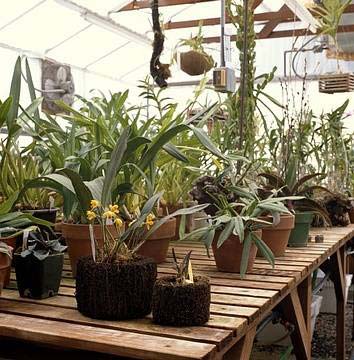
"Building Your Own Greenhouse" by Max Clarke
Page 75 of 123
Plants in a greenhouse
Automated Cooling and Ventilation Techniques
Automated cooling and ventilation systems can offer
systematic and controlled regulation of temperatures within
greenhouses. These automated techniques do not require you
to maintain personal controls. Systems have an in-built
mechanism that manages irrigation levels, operate suitable
shading systems and provide necessary ventilation by
operating relevant cooling.
This occurs by coordinating various pieces of automated
equipment in relation to the varying requirements of your
greenhouse.
Copyright © 2007 eBookwholesaler All Rights Reserved 75 -
"Building Your Own Greenhouse" by Max Clarke
Page 76 of 123
Automated vents have a special thermostat and electric motor
systems that remain open to allow the necessary amount of
cool air. They also allow warm air to flow out similarly.
Maintenance of such moderate temperatures within a
greenhouse promotes healthy growth of plants.
Automated systems function independently and you do not
have to keep changing them according to different seasons.
You can use a single thermostat, or a controller with a
temperature sensor. Sensors should always be in the shade
and located at around plant height. White sensor boxes can
reflect solar heat and give accurate temperature readings.
Copyright © 2007 eBookwholesaler All Rights Reserved 76 -
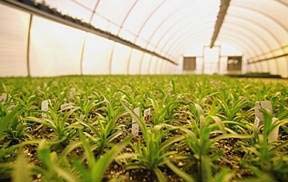
"Building Your Own Greenhouse" by Max Clarke
Page 77 of 123
Understanding Heating Methods,
Systems, Sources, and Distribution
Heating systems are essential for greenhouses to function
normally. Solar energy is the main source of heat energy
necessary for greenhouses. Nevertheless, you should have
adequate alternative heating systems to maintain systematic
heating all year through.
These heating systems can regulate temperatures within
greenhouses and maintain a conducive environment for plants
to grow and flourish.
Heating Systems and Methods
There are different heating systems for regulating
temperatures within greenhouses. You can use that which best
suits your greenhouse requirements.
Pipe Heating: This has many metallic or plastic pipes
carrying steam or hot water spread across the greenhouse.
These pipes heat the greenhouse through convection and later
radiate heat directly to the leaves. Overhead pipes should be
Copyright © 2007 eBookwholesaler All Rights Reserved 77 -
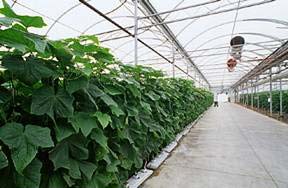
"Building Your Own Greenhouse" by Max Clarke
Page 78 of 123
closer to plant surface for effective heating without loss
through radiation. Similarly, hot pipes passing near the ground
in the greenhouse can stimulate better circulation of hot air.
Pipes passing through the middle of greenhouse can provide
excellent radiation of heat. Take care to avoid scorching of
plants through heat from the pipes.
Warm Floor Heating: This heating system involves placing
hot water pipes below the concrete of the greenhouse. This
system helps in uniform heating of the entire ground surface
of the greenhouse and uniform distribution and circulation of
heat throughout the plant canopy.
Heating the root system promotes plant growth. But, this
system may be too expensive for many.
Bench Heating: This heating system involves placing hot
pipes on, or under, the benches. This can assure uniform
spreading of the heat across plant roots and improve air
movement extensively. Although this system can reduce the
incidence of root pathogens by warming soil, it can cause
Copyright © 2007 eBookwholesaler All Rights Reserved 78 -
"Building Your Own Greenhouse" by Max Clarke
Page 79 of 123
excessive stress on the plants closest to heaters. Similarly,
plants farthest from heaters may not receive equal benefit.
Air Heating: Overhead heated air directed through fans and
perforated polyethylene tubes can heat greenhouses quickly.
You have to maintain perfect on-and-off timings to regulate
temperature within your greenhouse. This system could prove
expensive.
Central Heating Systems: These heating systems generate
heat from a centralized location, normally a huge boiler. This
heating system proves efficient for huge commercial
greenhouses, although installation and maintenance costs are
expensive. Hot water produced in a boiler, pumps into your
greenhouse at 180° F. This system also requires extensive
plumbing and circulating systems to maintain the necessary
supply of heat. You can use steam centralized heating systems
as they provide heat at 215° F.
Radiant heaters: These heaters have aluminum tubes with
reflectors. Combustion of fuel within the tubes cause
temperatures to rise to around 900° F. Reflectors direct the
infrared radiation downwards to plant surfaces and benches.
These surfaces absorb radiation and heat. These heaters
require low-flow or poly-tube fans to maintain necessary air
circulation.
The number of heating units should be such that there are no
cold spots. Initial costs are high.
Copyright © 2007 eBookwholesaler All Rights Reserved 79 -
"Building Your Own Greenhouse" by Max Clarke
Page 80 of 123
Fuel Sources for Heating Systems
There are different fuel sources for heating systems of
greenhouses. You can choose fuel according to cost,
availability, pollution regulations, storage possibilities, boiler requirements and maintenance requirements.
Popular Fuels:
Natural Gas: This fuel source may be currently one of the
most inexpensive and has low maintenance costs. It offers
clear burning and there is no need for storage tanks.
Propane and Butane: Although similar to natural gas, they
are more expensive and require storage tanks.
Oil: You need storage tanks to keep this fuel source. It
requires regular boiler maintenance as it does not burn
cleanly.
Wood chips or Logs: These fuel sources require huge
storage area and extensive handling with regular boiler
maintenance and cleaning.
Coal: This low-cost fuel requires extensive storage space and generates immense pollution too. You require regular boiler
maintenance.
While using coal, oil, or gas heaters, there should be a
constant supply of fresh air to avoid any build-up of carbon
monoxide. Fans can help to maintain the necessary air
circulation within greenhouses.
Copyright © 2007 eBookwholesaler All Rights Reserved 80 -
"Building Your Own Greenhouse" by Max Clarke
Page 81 of 123
Heat Distribution inside Greenhouse
Even distribution of heat inside a greenhouse is as essential as
generation of heat. Uneven distribution can cause many
problems.
Some of the most important are:
• Irregular growth of plants
• Improper maturation
• Excessive dry regions, and
• Stunted growth of plants
Different heating systems generate and distribute heat in
different ways. Centralized heating systems can be through
hot water or steam. Heat distribution takes place through a
network of aluminum, cast iron, or copper pipes. Steam offers
less resistance and therefore you can use pipes with a smaller
diameter. Steam additionally delivers higher heat than hot
water. Efficient distribution of heat requires proper placement
of pipes. This can increase heating and reduce heat loss.
Copyright © 2007 eBookwholesaler All Rights Reserved 81 -
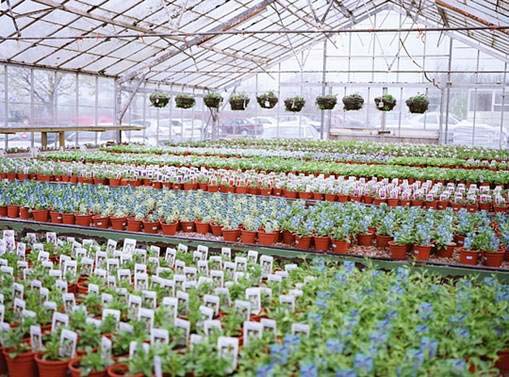
"Building Your Own Greenhouse" by Max Clarke
Page 82 of 123
Potted plants in a greenhouse
Placing pipes in layers can reduce heating efficiency. Instead,
place pipes singly.
Unit heaters are not very efficient in distributing heat.
Temperature differences occur along the length of a
greenhouse. Temperatures close to the heater are high. Use of
multiple unit heaters across each other can solve this problem.
It helps to maintain uniform heat across the entire length and
breadth of the greenhouse.
Additionally, you can use horizontal airflow fans to promote
movement of air within greenhouses.
Copyright © 2007 eBookwholesaler All Rights Reserved 82 -
"Building Your Own Greenhouse" by Max Clarke
Page 83 of 123
Unit heaters mounted onto greenhouse gables and connected
to polyethylene jet tubes can distribute heat evenly. In cooler
seasons, you can switch off the fuel source and firebox and
use a fan of unit heaters with polyethylene tubes with outside
louvers.
Heating systems placed low in the greenhouse can help to
maintain warmer temperatures. Leaf surface temperature
above dew point can prevent condensation. It helps prevent
various greenhouse diseases.
Other heating systems should be as close to the canopy as
possible. This saves lots of energy too.
Copyright © 2007 eBookwholesaler All Rights Reserved 83 -
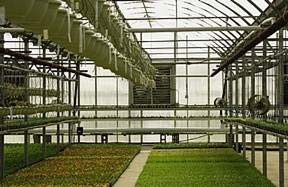
"Building Your Own Greenhouse" by Max Clarke
Page 84 of 123
Calculating Energy Requirements
for Heating Systems
Energy requirements for heating greenhouses are not the
same everywhere. It depends on various factors, including:
Size of the greenhouse
Difference in outside temperature and temperature within
greenhouse, and
Single or double layered covering of glasshouse in plastic or
glass.
Normally, greenhouse sellers educate you about heating
requirements of your specific greenhouse so that you can
make use of these systems too. You can calculate heat energy
requi













